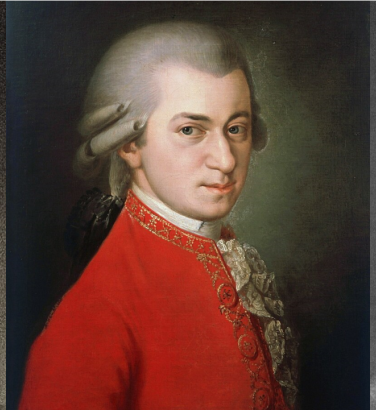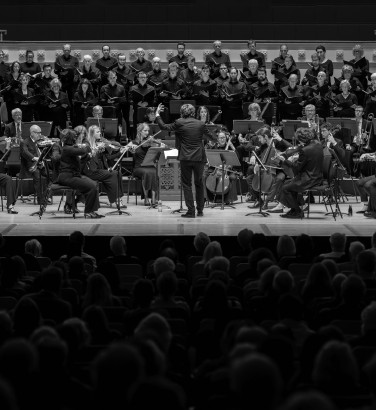
The search for Beethoven's successor
4 Nov 2024
News Story
Three composers who might be said to have followed in Beethoven's footsteps as the next pre-eminent symphonist: from left to right, Berlioz, Schubert and Brahms
The Romantic era had a tendency to idolise Beethoven, setting him up on something of a high pedestal. Here was the musician’s musician: a creative genius who had fought against the odds (not least his deafness) to produce searing masterpieces, a political radical who espoused the ideals of the French Revolution – and, from a practical perspective, a pioneer who had shown it was possible for a composer to go freelance. (We’ll skate over the fact that he was to a great extent dependant on a number of wealthy benefactors: Wagner was among those would discover the advantages of having someone indecently rich to finance his ventures.)
Because it held Beethoven in such high regard, the musical establishment was forever on the lookout for someone worthy to take on his mantle. Providence had, after all, gifted mankind with Beethoven only a few years after the death of Mozart – his first published works followed within less than a decade – so surely it was just a matter of time before the next musical genius came along.
As it turned out, almost half a century would elapse after Beethoven’s death in 1827 before everyone agreed that a worthy successor had been found. Within a year of its premiere in 1876, Brahms’ Symphony No 1 was hailed as ‘Beethoven’s Tenth’ by Hans von Bülow (who interestingly would conduct a revised version of the work at St Andrew’s Hall in Glasgow in the 1877-78 Season). But had they perhaps overlooked anyone in the meantime?
The earliest symphonies to have arguably lived up to Beethoven’s contributions to the genre were probably Schubert’s last two, which bear the distinction of having been written while the former was still alive. Not that either of them was known at the time: Schubert put aside No. 8 after completing only two movements (hence its nickname, Unfinished) and it remained unperformed until 1865. No. 9, Great, had long since resurfaced by then, but its importance in the post-Beethoven history of the symphony was by and large unacknowledged. Orchestras balked at the sheer difficulty of performing the score, and their lack of enthusiasm in turn prevented the music-loving public from appreciating Schubert's mastery of the symphony.
Composers writing symphonies in the fast-rising German tradition would actually be thin on the ground for the next few decades. Mendelssohn and Schumann are among the exceptions – the former emulating Beethoven with a choral finale in his Symphony No. 2, Song of Praise – but there is a sense of the weight of expectation preventing many from casting their hats into the symphonic ring. If anything, the symphony was in decline, with many musical giants of the mid-19th century shunning the genre altogether: Liszt developed the symphonic poem as an alternative while Wagner turned his attentions to opera.
There can be little doubt that Brahms himself was aware of the shadow cast over his shoulder by Beethoven. He began work on the first of his four symphonies when only in his early 20s, but was past 40 by the time it was complete. A notorious perfectionist – he systematically destroyed the vast majority of his juvenile works – it would have gone against his character to compose a work as important as his Symphony No. 1 if it did not live up to his own expectations, never mind anyone else’s.
That said, one of his earliest works with orchestra, the Piano Concerto No. 1, did go through an iteration as a Symphony in D minor before he recast it in its final form in the mid-1850s. It was followed later that same decade by a pair of Serenades, which feel like a conscious decision to focus on a less demanding genre for orchestra, and in 1873 by the St Anthony Variations, an all but explicit preparation for a symphonic finale.
The suggestion that Brahms had emulated Beethoven in his Symphony No. 1 was widely recognised – “any ass can see that” was the composer's own response when it was put to him – but there was clearly enough of his own personality in the music, making this work a great deal more than Beethoven’s Tenth. (There would be a parallel of sorts with another Symphony No. 1 decades later, which pays tribute to Haydn and Mozart while still being recognisably by Prokofiev.) By contrast, Brahms’ Symphony No. 2 (which the SCO performs from 5-7 December in a programme of Prokofiev & Brahms) had a much shorter genesis, being written in a matter of months as opposed to two decades, a clear sign of the composer’s newfound confidence in the genre.
But what of other countries? It is very much to the detriment of the German-dominated musical establishment that they largely ignored what composers of other nations were doing with the symphony, to some extent blinkered by their own vision of what the genre meant.
In France, Berlioz had quickly made his mark as a composer who dared to push at all sorts of musical boundaries: in the case of the symphony, this resulted in the seismic Symphonie fantastique in 1830, only 6 years after the Choral. His other three works in the genre are, in truth, not as accessible, and so markedly different from one another that the cycle makes for an incohesive whole. As it was, the symphony never really took off in France; besides Symphonie fantastique, the only other one to have achieved any lasting measure of popularity is Saint-Saëns’ Organ Symphony.
Eastern European composers, in the meantime, found themselves in the difficult position of having to reconcile the formal strictures of the symphony with a newfound interest in their own folk music. Combining the two proved to be quite a tightrope to negotiate: following the Germanic model too closely meant their music was insufficiently representative of their native culture, but music written in a folk idiom does not always lend itself naturally to the extensive musical development required of the symphony.
Trying different approaches inevitably resulted in some trial and error. This accounts for Tchaikovsky and Dvořák becoming better known for their later symphonies – starting with No. 4 in F minor and No. 6 in D respectively – than the earlier, less distinctive ones. Their success would have far-reaching consequences: if all fifteen of Shostakovich’s symphonies are recognisably Russian in style, this is in no small part due to Tchaikovsky having shown that this was possible.
The Germanic perspective may have been too narrow to admit the value of these other contributions to the symphonic genre, but it has to be said their approach did pay off in the longer term. Despite the lengthy wait for someone they could hail as a worthy heir to Beethoven, other composers soon reverted to writing symphonies. Although they are almost contemporaneous with Brahms’, Bruckner’s lack their popularity, but they were an important influence on Mahler, paving the way for arguably the most grandiose symphonic statements since Beethoven.
The symphony remains the pre-eminent genre in the world of classical music, something for which von Bülow and his contemporaries laid the groundwork. Beethoven's own legacy is of course beyond doubt, but his influence will be felt at least as long as a new symphony from a major composer remains an exciting prospect.
Related Stories
![Three men, the first two in 18th century formal dress (one in black and white, one in a red coat), the last in an old photo, smoking]()
What is a sinfonia concertante?
17 March 2025
We delve into the history of a hybrid genre ...![]()
The SCO Chorus on music for Lent
10 March 2025
With Easter just around the corner, we delve into perhaps the richest (and often darkest) choral repertoire of all ...![]()
The bassoon concerto
3 March 2025
For the last article in our concerto series (for now), we turn to an instrument too often dismissed as the orchestra's resident joker.


